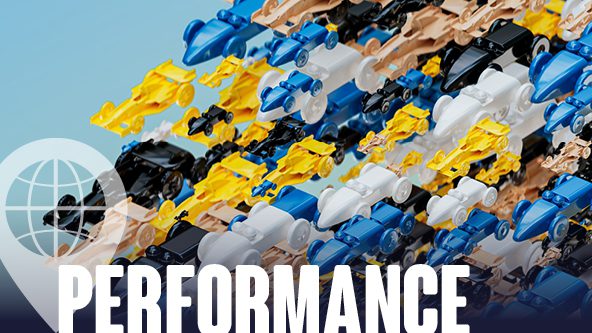Employee Experience and High-Performance Culture
The Measurement of Culture and Culture Change
1. BRIEF NOTE ON THE NATURE OF CULTURE
“Culture eats strategy for breakfast every time”, famously said guru Peter Drucker. What he meant was that – in the end – the culture determines what you can or cannot achieve.
The simplest definition is “the way we do things around here”. It is about behaviours together with systems and processes – not about what might be written on the walls or on laminated cards. It is how things actually happen. And it is “around here”. It is very local. That localisation is the kernel with layers around it – such as national, industry, company and local leadership norms and expectations. We need great care therefore in applying labels and generalisations, as actual workplaces are a unique subset of those generalisations which may stereotype the “surrounding layers”.
2. “MEASUREMENT” OF CULTURE
Culture cannot really be measured in any meaningful quantitative sense. It can be described however. There have been many instruments and models developed. The instruments identify “dimensions” of cultural visibility. A very popular one is the “Organisational Culture Inventory” (OCI), developed in the USA. It comes from a company called Human Synergistics and its publicity reads:
The Organisational Culture Inventory (OCI®) is the world’s most thoroughly researched and widely used culture assessment for measuring organisational culture. The OCI goes beyond corporate culture, company culture, and workplace culture, as the cultural dimensions it measures apply to all types of organisations.
The results of the OCI survey on the “current culture” is displayed as on the left on a “circumplex”. People are then asked “how they think it should be”. This also is plotted and the gaps between the two identified and used as a basis for interventions.
The survey can be redone from time to time to see how the gaps are narrowing.
A UK initiative has been under testing since 2016 from researchers at the London School of Economics, sponsored by AKO Capital. This project is called the UCCAT (Unobtrusive Corporate Analysis Tool) which works on a large number of indicators called “Unobtrusive Indicators of Culture” (UIC’s). This has developed to form 60 UIC’s across six main dimensions. The survey works basically on a binary approach of “exists/does not exist”
Many other instruments can be found based on various theoretical models.
3. CREATING OUR OWN INSTRUMENT
The problem with these generally available instruments is that every culture is unique and they have their own language and jargon. External instruments are therefore limited, especially in tracking culture change, and in bringing meaning into the workplace.
Many cultural change programmes are built around new sets of (often rather nebulous) values or slogans. They will be accompanied by flashy cards and maybe workshops on “what this means for us”. But too often nobody really knows whether we are making progress or whether the change programme is yet complete. As with all programmes, this is usually because there were no clear “SMART” objectives.
We can escape from the generalisations of the commercial instruments by taking some time to actually articulate what will be different when our programme has been successful. We can call this our “Cultural Template”.
The recommended process for creating a template is as follows:
- The senior management team should come together to define the culture that will best support their goals of delivering value, preferably with an external facilitator
- They do this by identifying their stakeholders and take each in turn, asking the question – “if we were delivering maximum value (=benefit) to this stakeholder, what will they be saying about our organisation and its people?”
- The facilitator of this process can suggest some subject areas, similar to those used in the commercial instruments (for example customer focus, levels of empowerment, adaptability, performance focus etc; reference Mike’s slide 8)
- The resulting statements can be grouped in categories but it is those statements that will form our template
- They can assess how their present values/ethics/philosophies are reflected in this set of statements, and redefine them if needed. (Note – organisations often start with redefining their values, but these are a tool for delivering value and not an end in themselves)
- The resulting set of statements can be tested with stakeholder groups to check whether this is how they see value being given to them.
4. USING THE TEMPLATE FOR TRACKING CULTURAL CHANGE
In Mike’s presentation to the Community session he shared Beckhard’s change formula (slide 7). Component “b” was “a shared vision”. This template provides that vision.
It is a common mistake to launch a multifaceted set of initiatives to achieve organisational change and people get confused and lost. Cultural change needs to be a step by step process based on perceived “gaps” between the “current state” and the vision.
This is the process for using the template:
- List all the statements with a number of columns to the right. These columns will be used for multiple assessments over time and to track improvements
- Ask groups of people from each stakeholder organisation to rate, on a scale of 0 – 10, the reality of that statement in their current experience – in the first column to the right
- In analysing the results we need to segment between stakeholder groups, but also by organisational units. Culture is essentially local and averaging across an organisation can be misleading and lead to wasted effort.
- Use the results to plan appropriate interventions for organisational change, taking the lowest average scores as the priorities
- Repeat the rating exercise every 4-6 months and reset the change intervention priorities based on the pattern of low scores
Every initiative and intervention that results from this diagnosis needs to follow the rules of effective change management of course (ref. Kotter’s 8 rules, Bridges’ Transitions, and others)
It is vital to remember that the “way we do things around here” is not just behavioural; it is found day by day in systems and processes. All too often they will be in conflict with the desired state. Their “owners” need to assess them for such conflicts using the template, and re-engineer as needed.
UPCOMING CRF EVENT:
The Realities of the New Working Environment
Hybrid Event I May 10, 2022 @ 9:00am BST
London and Online
CONCLUSION
Cultural change is, in the long run, transformational. The process however needs to be incremental and targeted. It often falls by the wayside when the senior management team changes and the initial commitment is lost. It requires senior managers to “live the template”, and when they do not, cynicism sets in. It is also essential that deviations at all levels from that template do not go unmarked – the quiet word which says “no, that is NOT the way we are going to do things around here” is essential. Changes in Behaviours, Systems and Processes have to become embedded.
The winners of “Great Places to Work” are characterised by vibrant, shared, value adding cultures. They “eat strategy for breakfast and lunch” and it is worth the effort that may be needed to achieve such a state.
JOIN THE NETWORK:
CRF Digital Communities
Including: D&I and Wellbeing | HR Directors | OD, Culture and Change | Talent, Leadership and Learning
Join CRF’s Organisation Development, Culture and Change Digital Community to connect with peers in the CRF network. Or for development in this area, check out CRF Learning’s On Demand programme: Building a High-Performance Culture available to complete in your own space and at your own pace. ‘Leading Organisational Change’ is another On Demand programme due to be launched soon.
DELIVERING BUSINESS IMPACT:
CRF Learning On Demand Courses
Flexible, online learning paths to complete at
your own pace in your own space







